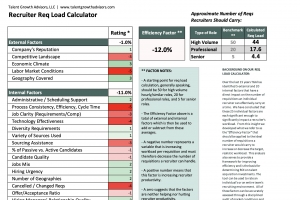Contingent Talent Strategy: Taking a Page from Finance

In a world where 80% of the share price of the average company is created by its intangible assets (brands, patents, relationships, processes, etc.), human capital is linked at the hip with financial capital. It takes both to succeed; financial capital to place a business bet, and human capital to win it. Given this symbiosis, what can we learn about human capital strategy from the more developed practice of managing financial capital?
There is a page for HR waiting to be taken from the Finance handbook – capital structure. Financial capital is the economic lifeblood of an enterprise but of course comes at a cost. Virtually all companies choose to meet their capital needs through a combination of selling equity shares and securing debt. The main reason for this mix is to optimize the cost of capital, although it’s a continuous balancing act:
Debt has advantages:
- Interest cost is normally lower than what equity holders expect from dividends and capital gains
- Debt holders do not dilute equity voting rights
- Transaction and regulatory costs of debt are lower than for equity
… And disadvantages:
- Interest and principal must be paid on an inflexible schedule, stressing cash flow
- Debt holder claims take precedent over equity in the event of a bankruptcy
- The interests of debt holders are not as aligned with the business as are those of equity holders
Well-managed companies often supplement their equity capital with debt to the tune of 25-30%, depending on their risk tolerance, balancing the advantages and disadvantages. Finance managers bring high value to their companies through this well honed strategy.
In human capital terms, the advantages and disadvantages of employee versus contingent talent are nearly parallel to that of equity and debt. For example, while contingent talent has an immediate cash cost that may even exceed that of an equivalent employee, employment is normally more expensive in the longer term (LTI, development, etc.). Contingent talent is more flexible in terms of gearing capacity up or down, but employees will engage at a different level because their stake in the business is higher. The similarities go on.
The reasons for managing the mix of financial capital center on:
- Ensuring resource capacity and flexibility
- Optimizing the cost of capital
- Providing access to the broad capital markets
Companies have the same needs with respect to human capital and for the most part these go unmanaged. It is time for HR to take the reins and implement strategies that optimize the resource companies count on them for -- human capital.
Want to learn more about how business value, intellectual capital and talent are connected? Pre-order my new book: Talent Valuation: Accelerate Market Capitalization through Your Most Important Asset.
Share this Article
Learn more about our unique approach to Talent Strategy Formulation.



